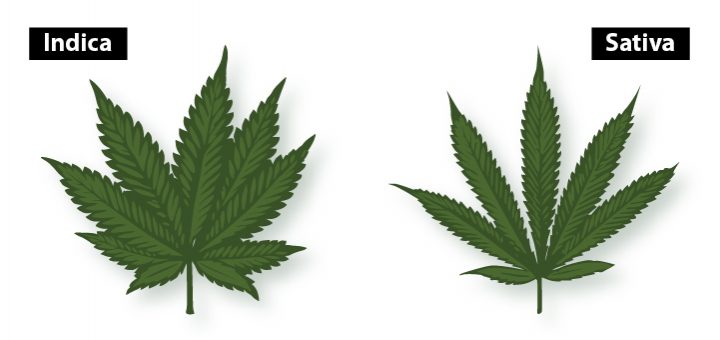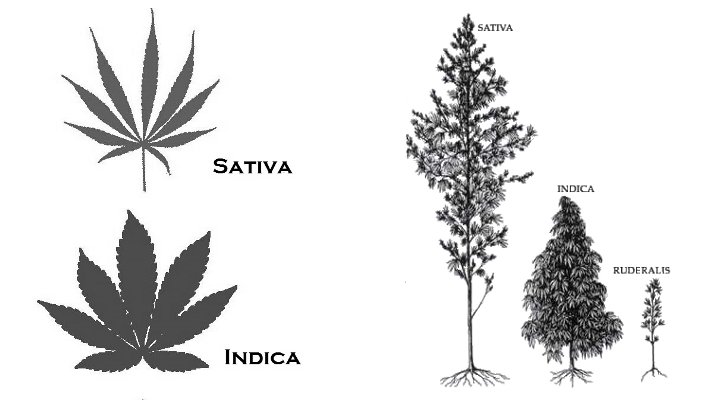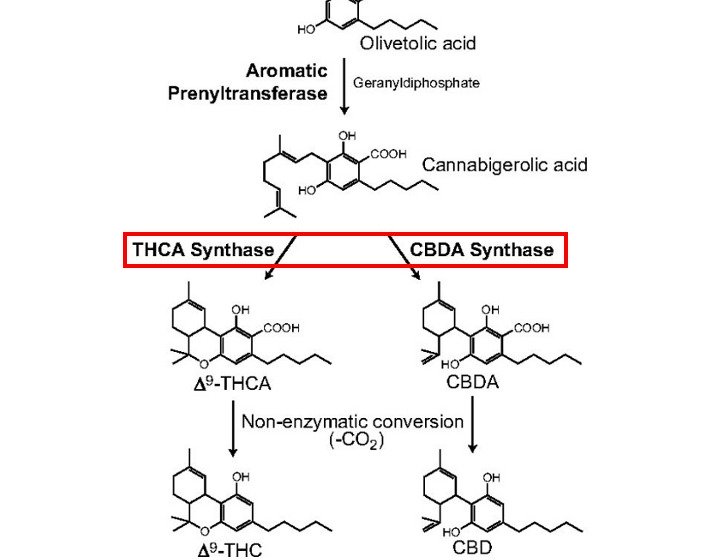
Indica and sativa are the two main types of cannabis. Each has its own unique effects and a distinctive high.
Cannabis is one of the oldest crops known to mankind, with records of its cultivation dating back thousands of years.
Today, it is widely accepted that marijuana has two main species: Cannabis indica and Cannabis sativa. Crossbreeding of indica and sativa strains has also led to a wide variety of hybrid strains.
Indica and sativa strains are thought to have different effects, and people often use them for different purposes.
Let’s take a look at the differences between these two types of cannabis.
Appearance

The most accepted way of distinguishing indica versus sativa is by appearance, or what scientists refer to as morphology.
Sativa plants are tall, loosely branched and have long, narrow leaves. They are usually grown outdoors and can reach heights of up to 20 feet.
Indica plants are short, densely branched and have wider leaves. They are better suited for growing indoors.
Effects
(Photo: Shutterstock)
Indica and sativa strains each have their own unique effects. Sativa strains are more stimulating, while indicas tend to be more sedating.
The high from sativa strains is energizing, cerebral and well suited for daytime use. A feeling of well-being and ease is often associated with sativas, making them ideal for social situations. They are also said to promote deep conversation and enhance creativity.
Sativa
- uplifting and energetic
- cerebral, spacey or hallucinogenic
- best suited for day use
Indica
- relaxing and calming
- body buzz or ‘couch lock’
- best suited for night use
Sativas have a higher CBD:THC ratio, while indicas have a higher THC:CBD ratio. Naturally, both have their own unique benefits as well.
Benefits and Uses
(Photo: Shutterstock)
Generally speaking, indicas are best for physical ailments such as pain and inflammation, and sativas are best for mental conditions such as depression and ADHD.
However, there are certainly exceptions based on the individual.
Uses of Indica
Patients dealing with conditions like multiple sclerosis, glaucoma, chronic pain, Crohn’s disease, and sleep disorders tend to benefit from indica’s full-bodied, muscle relaxing effects.
Indicas can also be used to treat anxiety, while many find that sativas can exacerbate anxiety or create paranoia.
Sativa strains can also be used for moderate relief of these conditions, and some patients will trade the increased relief of indicas for the energy-boosting effect of sativas during the day.
Uses of Sativa
Due to its uplifting and energizing effects on the mind, sativas are a great choice when treating mental ailments.
Sativa strains are often used to treat conditions like anxiety, ADD/ADHD, depression, and other mood disorders.
However, some people may find that certain sativa strains increase their anxiety, so it is always important to test out a new strain before committing to it as a medication.
Hybrid Strains
(Photo: Yarygin/Shutterstock)
Hybrids are crossbred strains of cannabis that have both indica and sativa genetics. They can take after either parent, or be a blend of both. The goal is usually to create a strain with desirable characteristics from each parent.
Hybrids are relatively common, and many popular indica and sativa strains have hybridization somewhere in their ancestry.
In some cases, a hybrid strain may be more characteristic of one species (indica or sativa).
These strains are referred to as indica-dominant or sativa-dominant. For example, Northern Lights is a 90% indica-dominant strain.
Crossbreeding
Hybridization, also known as crossbreeding, can be useful for many different reasons.
Growers consider indica, with its 6 to 8 week maturation time and it’s shorter, hardier stature to be easier to cultivate, and so it can be helpful to breed some of these characteristics into sativa strains.
Crossbreeding can also be used to “mellow out” a sativa strain that tends to cause paranoia, or to decrease the tiredness caused by a certain type of indica.
These new hybrid strains can produce a range of different highs, and growers will often have a specific set of effects they’re trying to achieve when crossbreeding.
Sometimes the best things happen by accident — but others, like the Charlotte’s Webstrain (a high CBD strain used to treat children with severe epilepsy), were the result of careful selection.
History and Origins
(Photo: Shutterstock)
The original classification of Cannabis indica was made by French biologist Jean-Baptiste Lamarck in 1785.
Lamarck observed that certain marijuana plants from India were intoxicating and could be made into hash. But traditional hemp crops, which were more common in Europe, had no mind-altering effect.

He came up with the name Cannabis indica to distinguish Indian cannabis from European hemp, which was known at the time as Cannabis sativa. Likewise, Cannabis indica was specifically recognized as a therapeutic in Western medicine during the 1800s.
Genetics
Scientists who have studied the differences between indica and sativa have come up with a number of theories based on genetics. One prevailing theory focuses on the genetic production of THC and CBD.
Plants that produce high levels of THC express genes that code for the enzyme THCA synthase. This enzyme converts CBG into THCA, which becomes THC when heated. These plants are typically considered indica.

On the other hand, some plants express genes that code for the enzyme CBDA synthase. This enzyme converts CBG into CBDA, the precursor of CBD, instead. These plants are typically considered sativa.
Based on this explanation, indica plants have high THC:CBD ratios and sativa plants have high CBD:THC ratios.
The problem is that, today, many strains produce varying amounts of both enzymes. Some researchers believe this is due to hybridization of the gene pools, which explains why some sativas are rich in THC and some indicas are not.
Summary
There are two main types of cannabis strains: indica and sativa. Growers have also created hybrids, which are a mixture of the two.
Indica strains tend to be used at night, while sativas are better during the day. Different strains can also be beneficial for different conditions. Indicas are often used for painful conditions, while sativas are often used for mental disorders.
Each strain has unique genetics, resulting in different levels of THC and CBD. Indicas tend to have more THC, while sativas tend to have more CBD.

